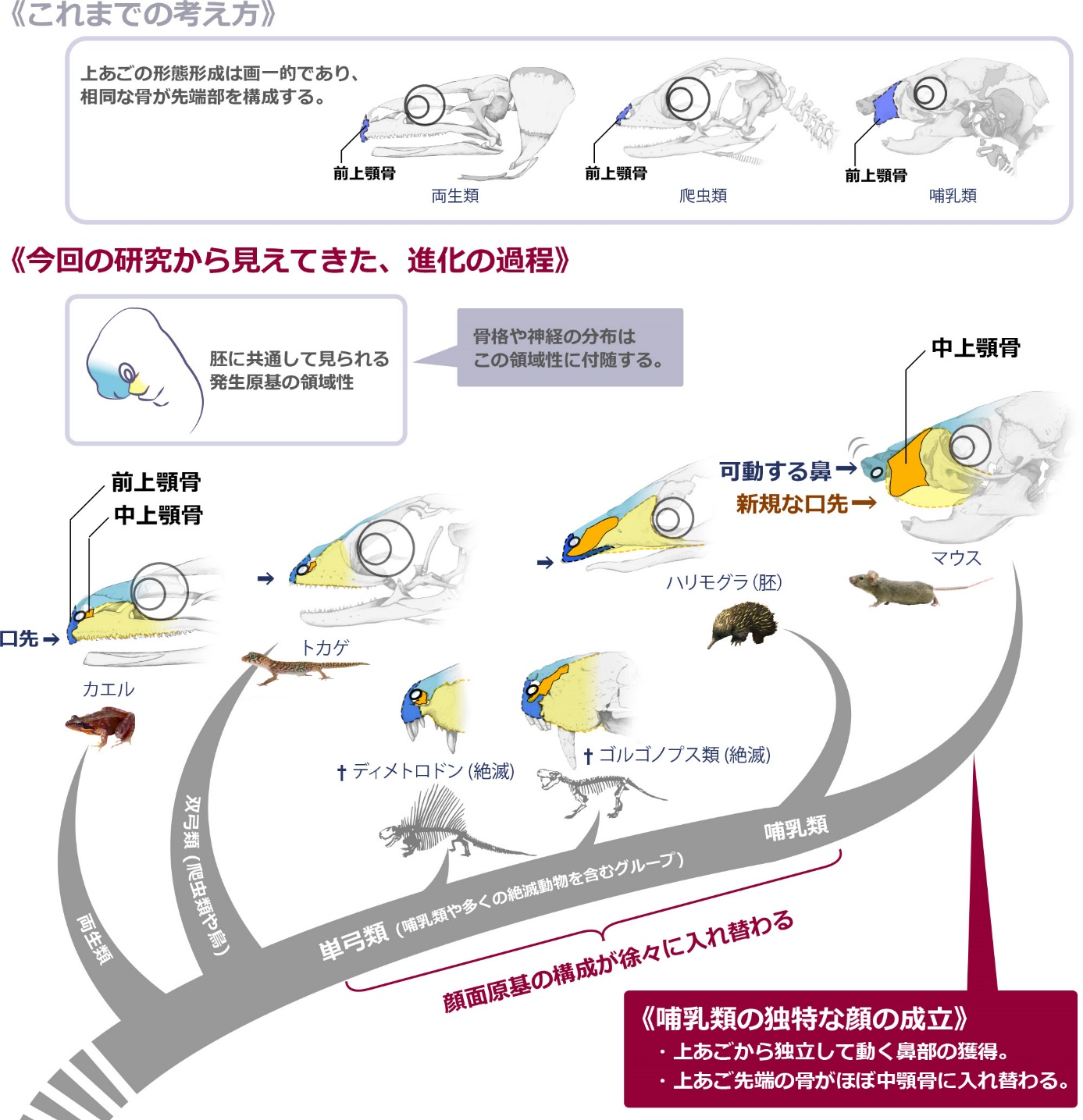DATE2021.11.04 #Press Releases
The dynamic evolutionary process that created the mammalian face
Disclaimer: machine translated by DeepL which may contain errors.
~The mammalian nose was the mouthpiece of our ancestors.
Graduate School of Medicine, The University of Tokyo
The University of Tokyo, Graduate School of Science
Summary
The mammalian face has a movable nose, and the position of the upper jaw skeleton and nerves is very different from that of reptiles and amphibians. The evolution of these unique mammalian faces has been a complete mystery. A research team led by Project Researcher Daiki Higashiyama of the Graduate School of Medicine at the University of Tokyo, together with members from the University of Tsukuba, The University of Tokyo Graduate School of Science, the University of Tübingen, and RIKEN, has been comparing the developmental processes of various animals, conducting molecular developmental experiments using genetically modified mice, and conducting paleontological analyses using fossil specimens. We have taken on this challenge by using multifaceted methods, including comparisons of various animal developmental processes, molecular developmental experiments using genetically modified mice, and paleontological analysis using fossil remains.
As a result, we found that the process of facial development, which had been regarded as uniform, has been drastically altered in mammals. The developmental protists that make the tip of the upper jaw in reptiles primarily give rise to the nose in mammals; instead, a different developmental protist makes the tip of the upper jaw in mammals.
The positional relationships of skeletal, neural, and other facial structures reflect these differences in the lineage of developmental protists, suggesting that the "anterior maxilla," the bone at the tip of the upper jaw that has been thought to have been preserved throughout vertebrate evolution, was replaced by another bone during evolution in mammals (Figure).

Figure: Evolutionary process of the face revealed in this study
These results provide a foundation for the study of mammalian evolution and rewrite previous textbook findings on the positional relationships of facial anatomical structures and their development.
The results were published in the Proceedings of the National Academy of Sciences of the United States of America ( PNAS) on October 30.
Associate Professor Tatsuya Hirasawa of the Department of Earth and Planetary Science is participating in this research.
For more information, please visit the website of Graduate School of Medicine.


